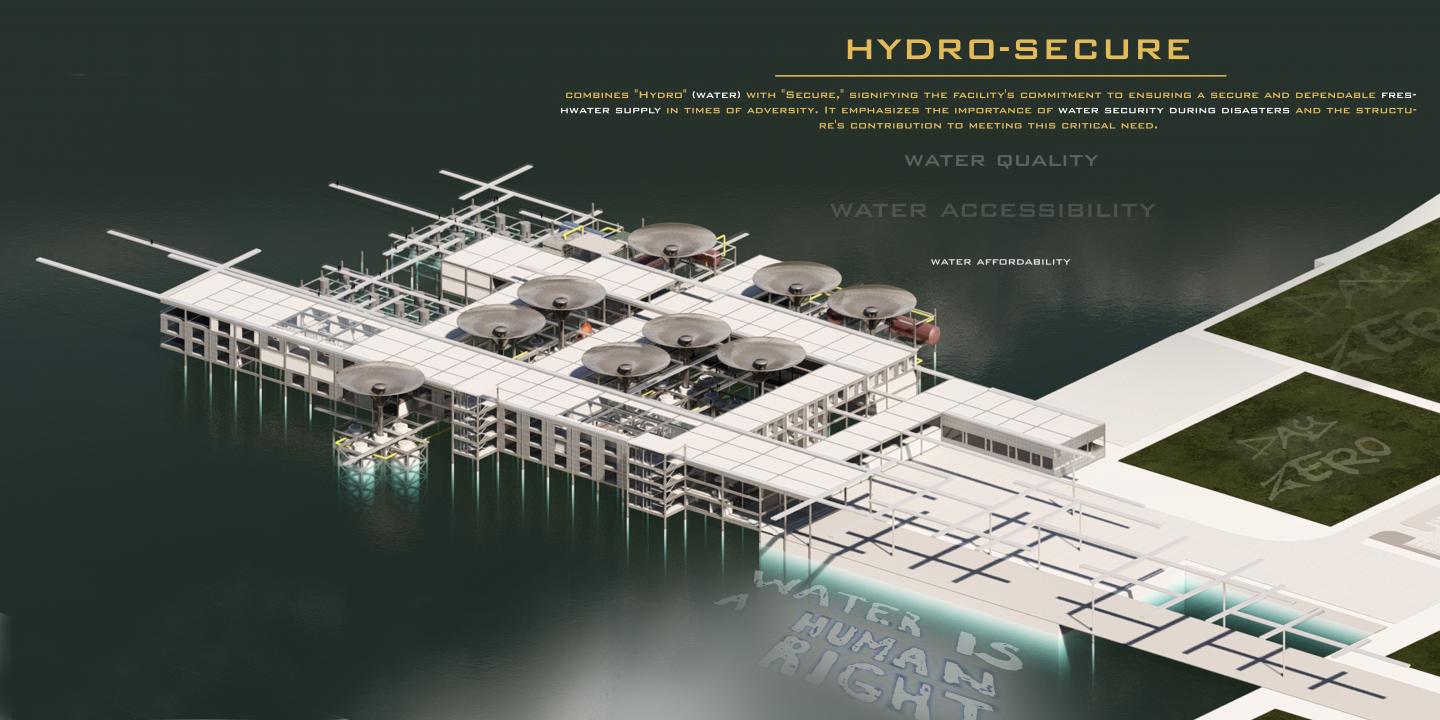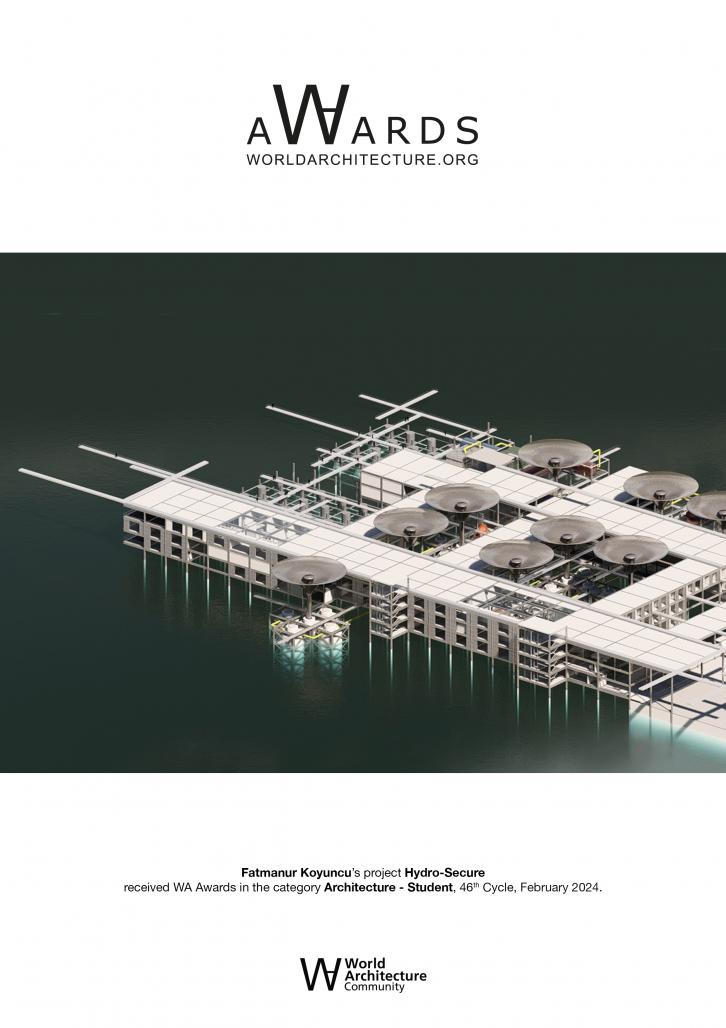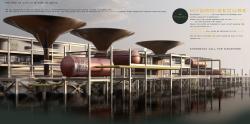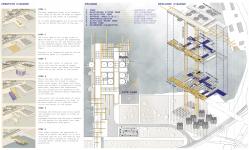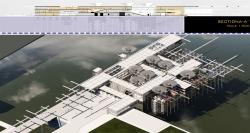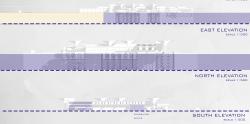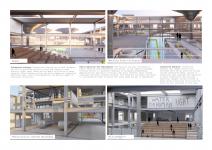As we know, as a result of the uncontrolled use of natural resources and climate change, the balance between urban areas, nature and the city has not been sufficiently established, and we have painfully experienced the consequences of living spaces that are not planned in harmony with nature and where construction processes are not sufficiently controlled with the recent disasters we have experienced. Unfortunately, incompatibility with nature and interference with the natural cycle have many negative consequences: irreparable loss of life and property.
Our cities, which are not sufficiently resilient against earthquakes, floods, fires and similar natural disasters, are under potential risk and danger. In the event of a possible natural disaster, we have painfully experienced that they have turned into places of scarcity and deprivation. At this point; How can we make our living spaces resistant to natural disasters? What we can do was actually the subject I basically examined.
In short, it was an urgent call for Natural Disasters.
After a disaster, basic needs such as accommodation, food and water still continue to this day and we see and read in the news that there is no access to clean and reliable water. I wanted to examine access to clean water, which is one of the most important needs for the continuation of human life. While starting the project, my design concerns were basically shaped by the following questions.
1. While the decrease in water resources, which is one of the most important consequences of global warming, has reached levels that will prevent sustainable life and while we are faced with water scarcity as a result of global warming, how will the water that is not enough for us in the event of a disaster be enough for disaster victims and disaster-affected areas?
2. Do we want to share the last water we have at that moment when there is no access to water?
3. How and from where will water be supplied to disaster areas?
4. Can fresh water be produced and stored by utilizing the 97% salt water available in the world?
5. How can we produce an activist attitude towards these problems through architecture?
2023
And I named the project hydro-secure.
HYDRO-SECURE: "Hydro" (water) combined with "Secure" to express the facility's commitment to provide a reliable supply of fresh water in difficult times. It emphasizes the importance of water security in disasters and the contribution of the structure to meeting this critical need.
The project is located in Izmir. The land is in the Alsancak port area. It includes commercial areas. In addition, this area is accessible due to its proximity to the parking garage, Alsancak Station, tram line and bus stops. The designed area is approximately 100.000 m²
SPATIAL ORGANIZATION: It is divided into 4 basic groups.
- Source
-Water Treatment-Rain Water Collection
- Storage
- Distribution
CHARACTERISTICS OF SEA WATER
Sea water, which constitutes 97% of the water in the world, is physically under the influence of three independent variables: temperature, salinity and pressure.
As you go deeper into seawater, decreasing water temperature and increasing pressure increase the dissolution of CO2 resulting from biological respiration. For this reason, the pH value in deep waters is lower than at the surface.
These developing acidic conditions cause dissolution in the precipitated CaCO3 layer.
However, this does not occur in warm and shallow waters.
Therefore, the main purposes of land selection are to settle in the deep part of the water and to have the intake points of the building in the deep part of the water.
The most suitable treatment method for the purification of sea water and the supply of drinking water suitable for human health is the "Reverse Osmosis" method.
My goal is to establish the production phase as close to the seashore as possible and even position it at sea. This plays an important role in water supply and water concentrate disposal.
The structure basically consists of 2 zones: Social and Technical:
Social zone;
In the absence of any disaster, it consists of areas where activities based on raising awareness of the public, children and students on important issues such as thirst, water treatment, safe water, access to water, water quality and water production take place. At the same time, engineers and scientists will continue to work and train in these areas.
Technical Zone:
It consists mainly of dual tanks where seawater is distilled and rainwater is collected and stored. Important parts of the structure are the places where the parts of this system and membranes are produced and developed, and the laboratories where the produced water is tested. "Reverse Osmosis" is the most suitable treatment method for the treatment of seawater and the supply of drinking water suitable for human health. My aim is to build the production phase as close to the seashore as possible, even positioning it on the sea. This plays an important role in water supply and disposal of water concentrate.
Designer: Fatmanur Koyuncu
Instructor: Assoc. Prof. Dr. Ülkü İnceköse, Assoc. Prof. Dr. Ebru Yılmaz, R.A. Merve Kılıç, R.A. Özüm Dülgeroğlu
Hydro-Secure by Fatmanur Koyuncu in Turkey won the WA Award Cycle 46. Please find below the WA Award poster for this project.
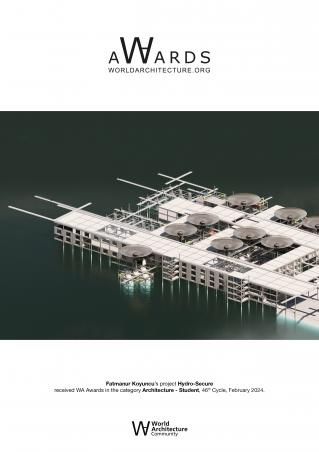
Downloaded 0 times.
Favorited 1 times
